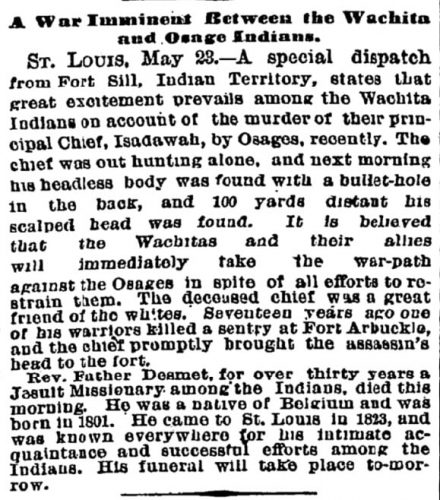Written correspondence was also used to express disagreements between
western nations and perhaps hash out those
conflicts. Intertribal relations in
the West were
complicated by long histories of competition for resources,
raiding, violence,
and alliance making. Relations were
further complicated in the 1860s and
1870s with the increased presence of white Americans in the West, the settlement
of reservations, and the constant pressures of colonialism. Tribes
were forced onto reserves, and some found themselves with new neighbors, tribes that might have been longtime enemies or distant strangers. Osages,
for instance, were
forced to relocate onto a reserve in Indian Territory in
1870, a territory with eventually more than two dozen other tribal nations,
several of which were
rivals. Like other nations in the territory, Osages had
to consider other groups diplomatically and figure out the best path toward
harmony. An early reservation-era
letter, sent in 1873 from Osages to Wichitas,
was an attempt to solve a dispute stemming from the murder of Wichita
chief Isadawah by a couple
of Osages. Wichitas wanted the Osages to
hand over the men responsible, and according to the white press, war
was “imminent” between the two tribes in May 1873. Shawnees who
lived Indian Territory, having gotten a copy of the Osage letter, sent their
own letter to the Osages in June that demanded the men be handed over. The Sac and Foxes did the same. Eventually a council was held, and the
Osages begrudgingly agreed to pay for Isadawah’s life with ponies.


